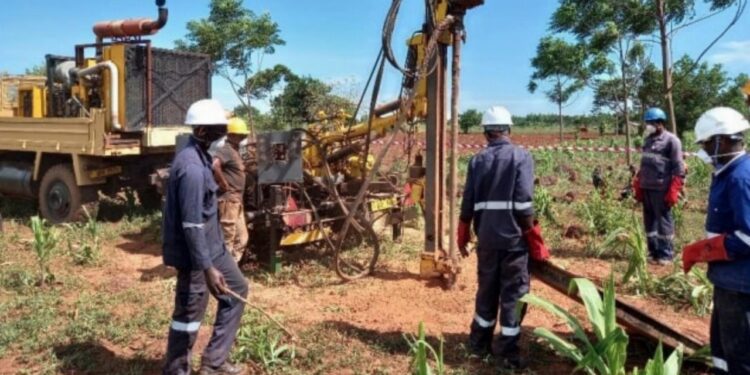Phase 4 Drilling Confirms Shallow, Thick, High-Grade Intervals
Ionic Rare Earths Limited (ASX: IXR) has received further quality assays from Tranche 1 of the Phase 4 drill programme in progress at the Makuutu Rare Earths Project in Uganda.
Makuutu is a large scale, ionic adsorption clay (IAC) hosted rare earth element (REE) project well supported by existing infrastructure and one of less than a handful of such deposits identified globally.
Drill assay results have been received for the Tranche 1 submission consisting of 50 drill holes, RRMDD280 to 330 (excluding hole RRMDD0326).
All holes were drilled to infill the current Makuutu Central Zone East Mineral Resource Estimate (MRE) area on a 200-metre spacing, aimed at increasing confidence from Inferred to Indicated resource classification.
Additionally, new holes have been added around the perimeter of the previously announced MRE which has the potential for a minor increase in the total size of the resource across this area.
This is the first tranche of drilling results from the 7,800m Phase 4 drilling programme, with a further two tranches currently at the Perth laboratory, and a third in transit to Australia.
The Phase 4 programme is progressing well, having now completed in excess of 6,200m, with all three drill rigs currently active completing the 200 metres spaced infill on the large MRE area. All 50 holes have delivered clay and saprolite mineralisation intersections above the cut-off grade of 200 ppm Total Rare Earth Oxide less CeO2 (TREO-CeO2), consistent with the initial drilling phases (2019 and H1 2020) and the current MRE.
Notable thick, high-grade and near surface intervals reported from the tranche one assay results include:
• RRMDD324 8.2 metres at 1,359 ppm TREO from 3.3 metres
• RRMDD316 8.4 metres at 1,258 ppm TREO from 2.8 metres
• RRMDD317 7.1 metres at 1,238 ppm TREO from 2.8 metres
• RRMDD320 13.4 metres at 1,232 ppm TREO from 4.0 metres
• RRMDD294 8.4 metres at 1,214 ppm TREO from 3.0 metres
• RRMDD315 11.2 metres at 1,160 ppm TREO from 2.1 metres
• RRMDD311 5.2 metres at 1,156 ppm TREO from 2.1 metres
• RRMDD291 7.7 metres at 1,136 ppm TREO from 2.4 metres
• RRMDD300 8.3 metres at 1,120 ppm TREO from 3.6 metres
• RRMDD308 5.8 metres at 1,072 ppm TREO from 3.1 metres
• RRMDD310 6.9 metres at 1,014 ppm TREO from 3.5 metres
• RRMDD313 6.6 metres at 1,008 ppm TREO from 2.0 metres
“These infill results align well with expectation, given the continuity of the clay previously observed at Makuutu,” Managing Director, Tim Harrison, said.
“The thick clay mineralisation in the Makuutu Central Eastern Zone is expected to add substantial grade and tonnage in the Indicated resource classification for the Project as part of the next MRE update expect late Q1 2022, and a key input for the feasibility study expected before October 2022.
“The near surface results with such thick zones of elevated TREO grades observed within these infill results are very positive, inferring potential to have a higher-grade mining inventory earlier in the mine plan for the Project, and potentially leading to a significant positive impact on the economics of the feasibility study.”
For further information please visit: https://ionicre.com.au/












